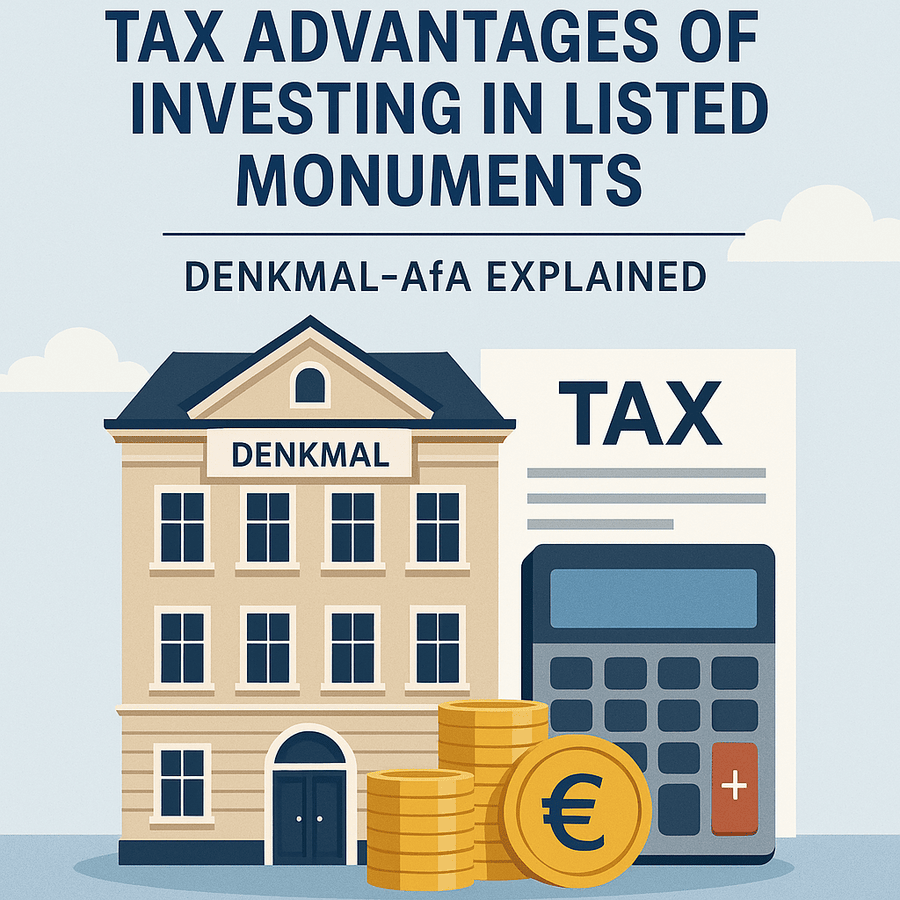In Germany, the concept of Kaufpreisaufteilung – Split Property Price Between Land and Building is one of the most overlooked yet financially crucial aspects of property ownership. It determines how your property’s purchase price is divided between land (which cannot be depreciated) and building (which can).
The higher the building portion, the more you can deduct over time — meaning more cash flow and less tax. But don’t get too creative: the Finanzamt (tax office) has its own ideas about what’s “fair.”
Why Kaufpreisaufteilung Matters
Let’s say you buy a property for €600,000.
If 70% counts as building value (€420,000), you can depreciate that over decades — potentially saving thousands.
If the tax office decides only 50% is building value (€300,000), your annual write-offs shrink dramatically.
That’s why this little calculation isn’t just paperwork — it’s strategy.
Who Determines the Split
You can propose an allocation in your purchase contract, but the Finanzamt has the final word. Since a 2021 ruling by the Federal Fiscal Court (BFH, 21.07.2021 – IX R 26/19), the tax office uses the official BMF Kaufpreisaufteilungsrechner to determine a fair split based on:
- The Bodenrichtwert (standard land value)
- Building type, age, and condition
- Land size and regional property data
If your contract’s ratio deviates too far from what this calculator suggests, the Finanzamt may reject it and apply its own numbers.
Example: A Realistic vs. Optimistic Split
Imagine this scenario:
- Purchase price: €600,000
- Land area: 600 m²
- Bodenrichtwert: €500/m² → Land value = €300,000
- Building value (estimated): €300,000
The official calculator therefore suggests a 50/50 split.
If your contract proposes 95% building (€570,000) and 5% land (€30,000), the Finanzamt will raise an eyebrow — and then quietly replace it with its own 50/50 assessment.
The difference? Your depreciable base drops by €270,000, meaning lower annual AfA and higher taxable income.
Can You Challenge the Finanzamt’s Numbers?
Yes — but only with solid documentation.
You’ll need:
- An independent property valuation from a certified appraiser
- Proof of renovations or structural improvements that increase building value
- Evidence of land limitations (e.g., unusable slope areas, shared access)
Without data, your argument will crumble faster than a 1970s plaster wall.
Conclusion: Fairness Beats Creativity
To sum up, Kaufpreisaufteilung – Split Property Price Between Land and Building isn’t about manipulating figures; it’s about fair, data-driven valuation.
A realistic, well-documented split ensures your depreciation benefits are secure and keeps you on good terms with the Finanzamt.
For more expert insights on property taxation and investment strategy, visit Immojourney’s blog or explore the official BMF calculator for accurate valuations.





